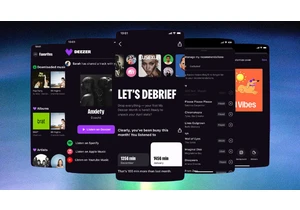The Fast Company Impact Council is a private membership community of influential leaders, experts, executives, and entrepreneurs who share their insights with our audience. Members pay annual membership dues for access to peer learning and thought leadership opportunities, events and more.
Over the past decade, the rising cost of insulin epitomized the broader systemic issue of higher healthcare out-of-pocket costs that prevented many Americans from accessing essential care. People with diabetes, who rely on insulin to maintain their health, were routinely priced out of accessing their medications—forced to choose between filling their prescriptions or paying other bills. As a result, lowering the cost of insulin became a political rallying cry, compelling elected officials and regulators to take action.
Given the complexity of the American healthcare system, there’s no magic bullet when it comes to reducing insulin prices—or any prescription price for that matter. Patent protections, gaps in targeted affordability regulations, and supply chain issues are just a handful of the network dynamics at play. But, through collaborative efforts by pharma, lawmakers, and other stakeholders, the tide on insulin prices is beginning to turn.
New research from GoodRx shows that the average price per insulin unit dropped 42% from 2019 to mid-2024—the lowest average in a decade. Notably, it wasn’t just one factor that contributed to this significant drop. The Inflation Reduction Act, which began capping costs for Medicare enrollees, was a game changer for millions of Americans. Voluntary manufacturer price cuts and savings programs, as well as increased approvals of biosimilars and generics, also drove big declines in insulin prices. Collectively, these efforts reflect a pivotal shift toward improving accessibility. Most importantly, this illustrates how, when the industry comes together, we can make medications more affordable.
Collaboration as a catalyst for change
To usher in a new era of affordable medicine, working together across the healthcare ecosystem is essential. Pharmaceutical companies, policymakers, insurance companies, and healthcare systems each hold a critical piece of the solution. While insulin price reductions are a notable victory, out-of-pocket costs for prescription medications continue to trend upward. Since 2014, prescription list prices have grown nearly 40%. Today, fewer medications are covered by insurance, and others are subject to restrictions like step therapy and prior authorizations. These factors contribute to why an estimated 53 million Americans leave their medications at the pharmacy counter every month.
The insulin example demonstrates the impact that joint efforts can have in making lasting change, and private partners can play a significant role in driving innovation. At GoodRx, we saw an opportunity to contribute to the solution by partnering with Sanofi in 2023 to offer their most prescribed insulin, Lantus, for only $35 to all Americans—whether they had insurance or not. This happened before the manufacturer implemented its own program for consumers with commercial insurance and within the same coverage year that Medicare enrollees began benefiting from $35 insulin copay caps.
Apply the insulin blueprint
Though insulin was the starting point, it was only the first step on our path to better support people with diabetes. Since partnering with Sanofi, GoodRx broadened its efforts by launching cash-pay programs with other manufacturers to make essential diabetes medications and devices more affordable—especially for those not covered by insurance or with high out-of-pocket costs. For instance, we’ve partnered with Dexcom to lower the price of their Dexcom G6 and Dexcom G7 continuous glucose monitors by over $200 per month for consumers with diabetes. Both of these programs have brought savings to thousands of people who used GoodRx to complement insurance shortfalls.
Our success with diabetes offers a playbook to tackle affordability challenges for other chronic conditions, such as heart and renal diseases. The groundbreaking medications and technology used to treat and monitor these conditions, especially solutions new to the market, typically come with high price tags that put them out of reach for many people. But it doesn’t have to be this way.
To prioritize affordability and increase access to lifesaving treatments, there must be a sustained commitment to transparency and accountability from all stakeholders. Policymakers can strengthen and expand consumer-centric legislation while enforcing regulations that ensure companies prioritize the needs of people over profits. Pharmaceutical companies can prioritize the development of innovative treatments to advance patient care while also taking deliberate steps to improve affordability. This includes providing savings programs and supporting the production of biosimilars and generics to ensure broader patient access to lifesaving medication.
Charting a path forward
At GoodRx, we collaborate with partners across the healthcare industry, from pharmaceutical companies to retail pharmacies and healthcare professionals. These interactions provide an unparalleled vantage point for identifying opportunities to improve transparency and affordability.
The journey toward making healthcare more affordable is undeniably complex, but the insulin price reduction serves as a beacon of hope. It underscores how sustained, collaborative efforts and a shared commitment to the public good can improve access to critical medications for those who need them most. The path forward is clear, and it is up to us as industry leaders to follow it.
Dorothy Gemmell is chief commercial officer and president, manufacturer solutions at GoodRx.
Autentifică-te pentru a adăuga comentarii
Alte posturi din acest grup

If real Easter eggs aren’t your thing this weekend, you may find hunting for digital ones more enjoyable. And there are some cool ones to find at your fingertips, provided you have an iPhone or Ma

With music streaming, users have gotten used to being at the mercy of algorithms. But French music streamer Deezer is making it easier for its subscribers to make the algorithm work for them.

Trying to get from point A to point B? If only it were that simple! With any manner of travel these days, you’ve got options: planes, trains, buses, ferries, and beyond. And finding the best

When Twitter cofounder and Medium founder Evan “Ev” Williams was planning his 50th birthday party, he didn’t know who to invite. Having spent more of his life building and scaling tech

If you thought you’d heard the last of the viral “Apple” dance, think again. The TikToker behind it is now suing Roblox over its unauthorized use.
Last year, during the height of Brat su

A Wall Street Journal report this week gave an extensive look into how Elon Musk, the

Netflix fared better than analysts anticipated during the first thr
